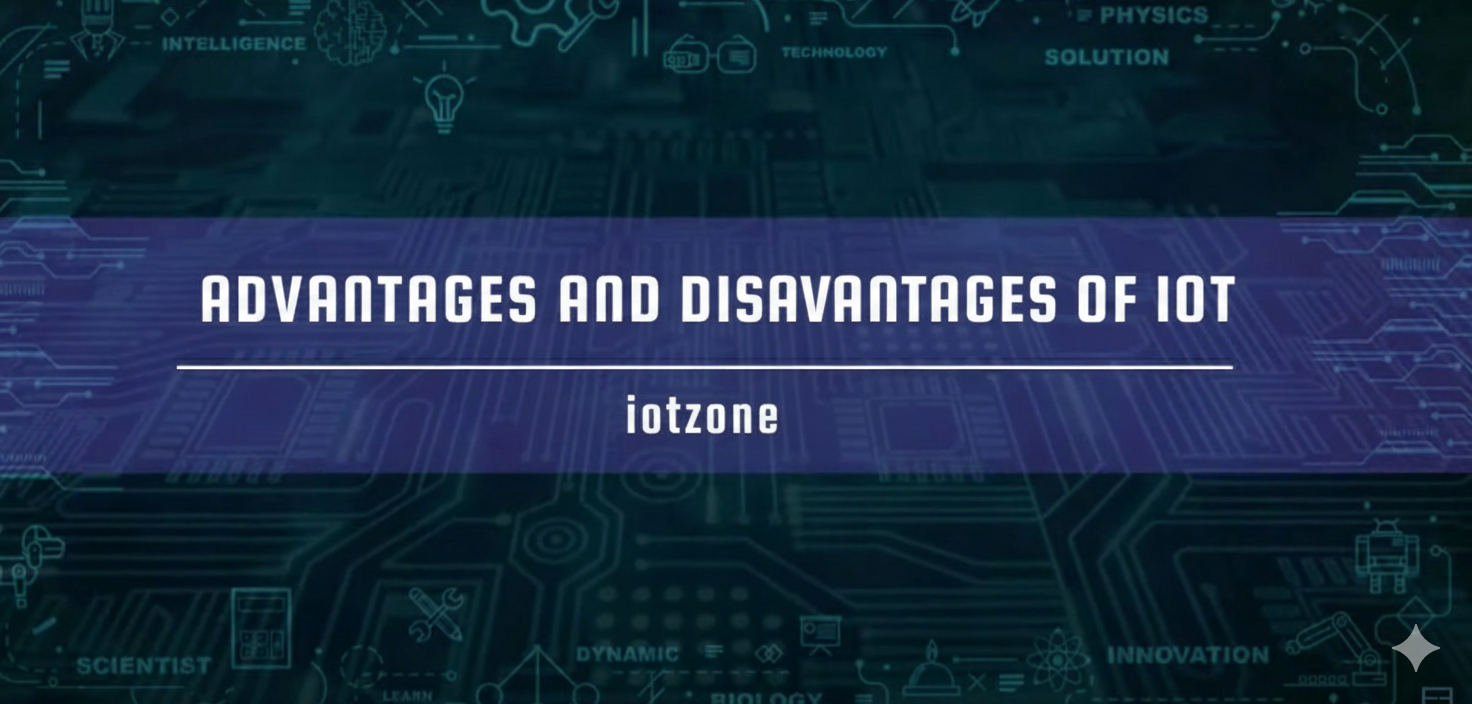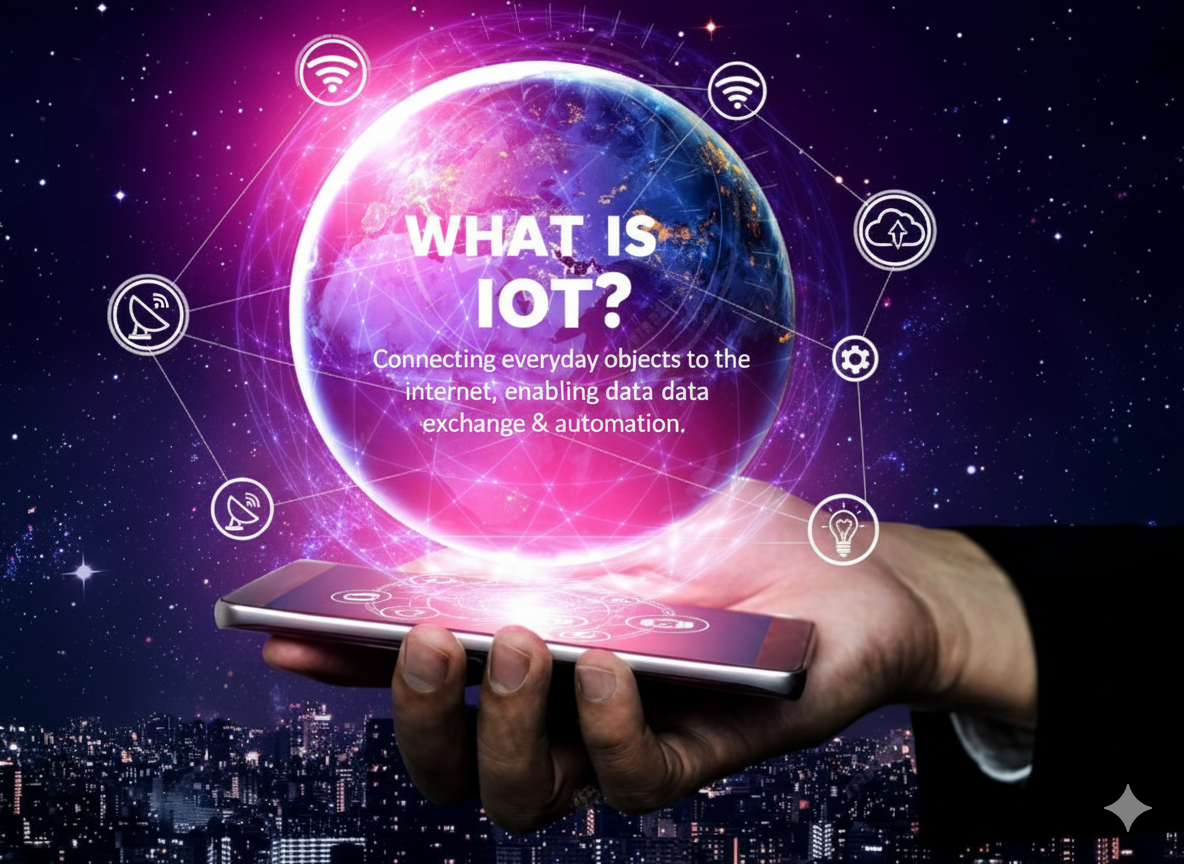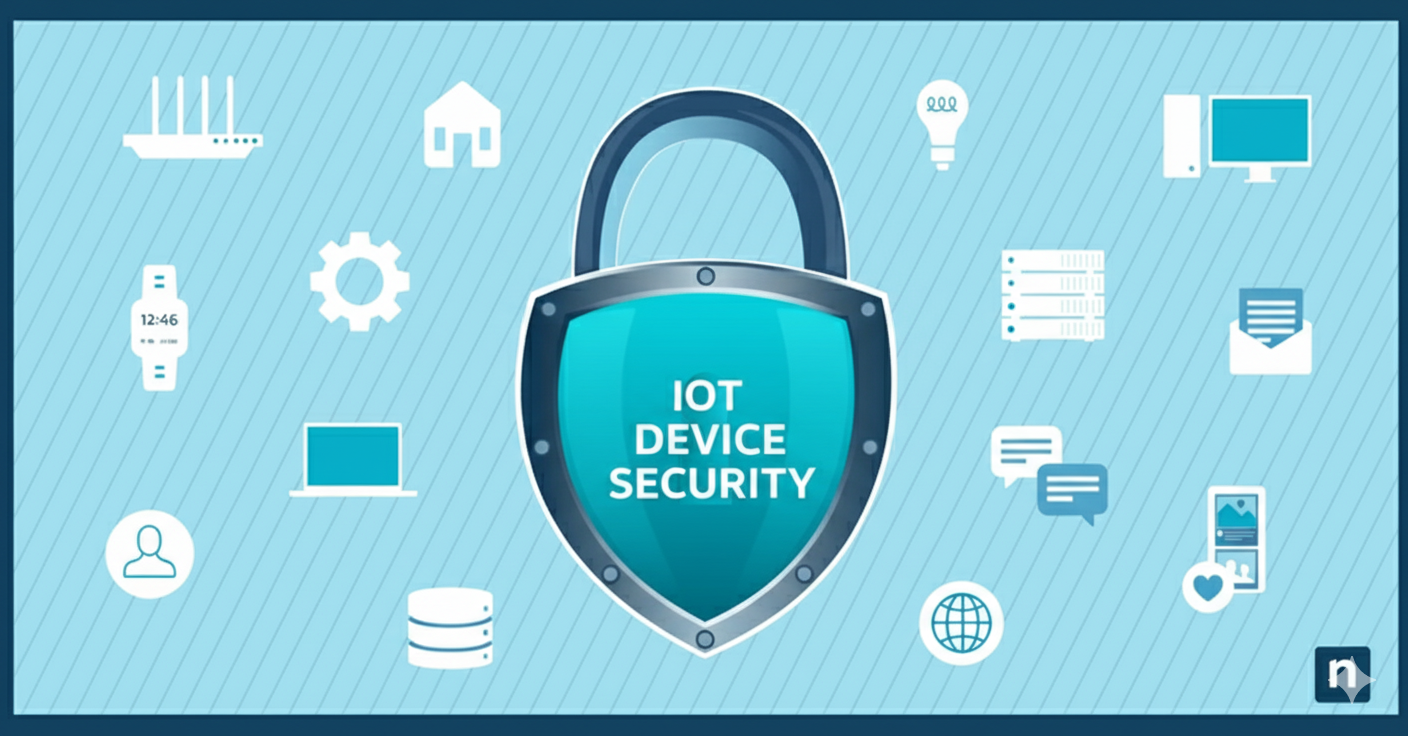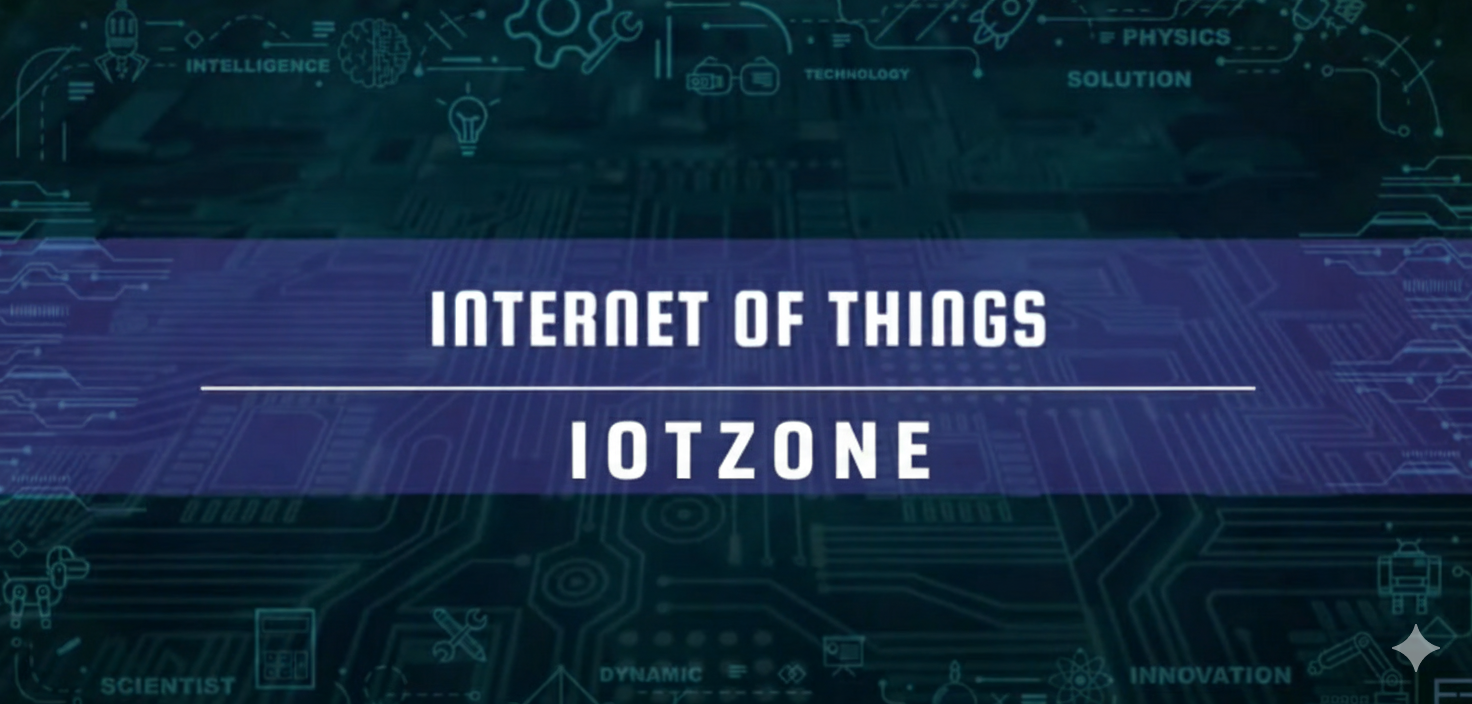Is IoT a Blessing or a Curse? A Deep Dive into its Advantages and Disadvantages

Overview
Welcome to the Engineering Fund of Family! In this third blog of our Internet of Things (IoT) lecture series, we'll dive into the advantages and disadvantages of IoT. IoT is transforming the way we interact with the world, enabling a wide range of industries to automate processes, enhance productivity, and create smart environments. Let's explore its benefits and challenges in detail.
Advantages of IoT
-
Automation and Technical Optimization
One of the primary advantages of IoT is its ability to automate processes. Automation leads to smoother operations and technical optimization, as decisions can be made automatically through IoT applications running on the cloud. This makes production systems more efficient, reduces downtime, and improves overall quality. For example, industries like manufacturing, agriculture, and logistics can use IoT sensors to monitor machines, track inventory, and optimize workflows, resulting in a significant improvement in operational efficiency. -
Reduction in Waste and Better Use of Resources
Another major benefit of IoT is the reduction of waste. IoT systems can track and monitor the consumption of resources in real-time. This enables industries to optimize their use of raw materials, energy, and other inputs, leading to better resource management and lower environmental impact. By automating these processes, IoT helps businesses minimize waste, reduce energy consumption, and cut operational costs. -
Minimizing Human Efforts and Time-Saving
IoT applications reduce the need for manual intervention, thus minimizing human effort and saving valuable time. This is especially beneficial in industries where repetitive tasks are common. For example, smart factories can use IoT to automatically adjust production parameters, ensuring high-quality outputs with little human involvement. Additionally, the automation of decision-making processes helps organizations save time and focus on more strategic tasks. -
Cost Reduction and Improved Productivity
With IoT-enabled automation, companies can cut down on operational costs. By improving efficiency, reducing downtime, and minimizing waste, IoT helps lower production costs. It also helps increase productivity by streamlining workflows and ensuring that machines and systems are running optimally. The ability to gather data and monitor assets in real-time allows businesses to take timely actions to address potential issues before they escalate, further improving productivity. -
Timely Actions and Accident Prevention
In critical applications, where timely decision-making is essential, IoT plays a key role in preventing accidents and improving safety. For example, IoT sensors can monitor equipment in real-time, and if a fault or malfunction is detected, the system can automatically trigger safety protocols, preventing accidents. This is particularly important in industries such as healthcare, transportation, and manufacturing, where real-time monitoring and rapid response are crucial for safety. -
Enhanced Product Quality and Customer Experience
IoT enables businesses to collect vast amounts of data about their operations, customer preferences, and product usage. This data can be analyzed to improve product quality and offer personalized experiences to customers. For example, IoT applications can be used to track inventory and customer orders in real-time, ensuring that products are delivered on time and customers receive exactly what they need. The ability to monitor assets and track deliveries provides a more seamless and cost-effective service to users. -
Integration with Big Data and Artificial Intelligence (AI)
IoT combined with Big Data and AI can help businesses extract useful information from large volumes of raw data. By using AI algorithms, businesses can predict trends, analyze behaviors, and improve their models over time. This integration allows for continuous optimization of systems, ensuring that they adapt to changing conditions and deliver the best outcomes. -
Smart Sensors and Monitoring
IoT applications use smart sensors to monitor various parameters, including temperature, humidity, gas leakage, weight, and more. These sensors provide real-time data, enabling businesses to maintain better control over their processes and improve efficiency. For example, smart sensors can be used in agriculture to monitor soil moisture and temperature, ensuring optimal growing conditions for crops. Similarly, in manufacturing, sensors can detect equipment malfunctions and trigger maintenance actions before problems escalate. -
Real-Time Fault Detection and Asset Tracking
IoT systems can identify faults in real-time, allowing businesses to quickly address issues and minimize downtime. With IoT, businesses can track the location and status of assets, whether they are in transit, in production, or in use. This real-time tracking helps businesses improve their supply chain management, ensure product quality, and maintain a smooth flow of operations. -
Improved Business Decision-Making with Predictive Analytics
IoT systems, when combined with deep learning and predictive analytics, allow businesses to forecast outcomes, trends, and behaviors. This predictive capability helps organizations make more informed decisions, optimize resource allocation, and mitigate risks. By analyzing IoT-generated data, businesses can better understand market trends, customer behavior, and operational performance.
Disadvantages of IoT
-
Security Vulnerabilities and Risk of Cyberattacks
Despite its many advantages, IoT is highly vulnerable to cyberattacks. Since IoT systems are connected to the internet, hackers may exploit vulnerabilities to gain unauthorized access to sensitive data or control over connected devices. Ensuring strong security protocols and encryption measures is essential to protect IoT systems from potential threats. As IoT devices become more widespread, the risk of attacks increases, making robust cybersecurity a priority. -
Privacy Concerns
Privacy is a major challenge in IoT applications, as sensitive personal and business data is often transmitted and stored in the cloud. The extensive collection and sharing of data raise concerns about who has access to this information and how it is being used. Users must trust that companies handling their data are taking appropriate measures to safeguard privacy. Additionally, IoT devices can collect personal data without users' knowledge, which could lead to privacy breaches if not properly managed. -
Dependency on Internet Connectivity
One of the biggest drawbacks of IoT is its dependence on stable internet connectivity. If the internet connection is disrupted, IoT systems may fail to function as expected. This dependency on the internet also increases vulnerability to network outages or disruptions caused by cyberattacks. Businesses must have reliable internet infrastructure in place to ensure the continuous operation of IoT systems. -
Challenges in Integration and Standardization
IoT devices are often manufactured by different companies and may not always be compatible with one another. This lack of standardization can make it difficult to integrate different IoT systems, especially when they come from different operators or regions. For instance, the standards for IoT devices may vary depending on the country, as different regions have different regulations and requirements. This incompatibility makes it challenging to create a unified IoT framework that works across borders. -
Job Loss and Economic Impact
The automation enabled by IoT has led to concerns about job loss. As IoT systems automate repetitive tasks and optimize processes, businesses may require fewer human workers, leading to job displacement. While IoT and AI can increase productivity and reduce costs, they also pose a risk to certain job sectors. It's essential for workers to adapt to new roles and learn skills that complement the use of IoT technologies. -
Health Concerns from Overuse of IoT Devices
The overuse of IoT devices may have an impact on human health. Prolonged exposure to screens, lack of physical activity, and dependence on technology can lead to various health issues, including eye strain, poor posture, and mental health challenges. It's crucial for individuals to balance their use of IoT technologies with physical activity and proper health practices. -
High Initial Cost and Complexity
While IoT can provide long-term savings and efficiency, the initial investment in IoT infrastructure can be high. Businesses may need to invest in sensors, devices, software, and cloud storage, which can be costly. Additionally, implementing IoT systems requires specialized knowledge and expertise, making it a complex process for organizations without dedicated resources.
Conclusion
The Internet of Things has the potential to revolutionize various industries, making them more efficient, productive, and cost-effective. From automation and smart sensors to predictive analytics and real-time monitoring, IoT is opening up new possibilities for businesses. However, it also presents challenges, including security risks, privacy concerns, and the need for standardized solutions. By addressing these challenges and embracing the advantages of IoT, we can unlock its full potential and pave the way for a more connected and efficient future.Administrator
Frequently Asked Questions
Common questions about Is IoT a Blessing or a Curse? A Deep Dive into its Advantages and Disadvantages. Find answers to the most frequently asked questions.
User Reviews & Comments
Share your experience with this IoT Blog. Your feedback helps our community make informed decisions!
Share Your Experience
Help others by sharing your thoughts about this IoT Blog.
Related Blogs
Explore more IoT Blogs in the same category

What is the Internet of Things (IoT)?
Tutorials
The Internet of Things (IoT) connects everyday devices to the internet, enabling smart homes, healthcare, farming, and industries with automation, real-time monitoring, and data-driven insights.

IoT Security Risks and How to Protect Your Devices
Tutorials
Learn how to secure your IoT devices at home and office, reduce cyber risks, and protect privacy with best practices for a safer connected world.

IoT Components: Working of IoT, Sensors & Actuators, Role of IoT, IoT Cloud, IoT Analytics
Tutorials
Explore IoT components, working, sensors, actuators, IoT cloud, and analytics. Learn how IoT transforms data into insights, connecting devices for smarter and efficient solutions.
No Reviews Yet
Be the first to share your experience with this IoT Blog!